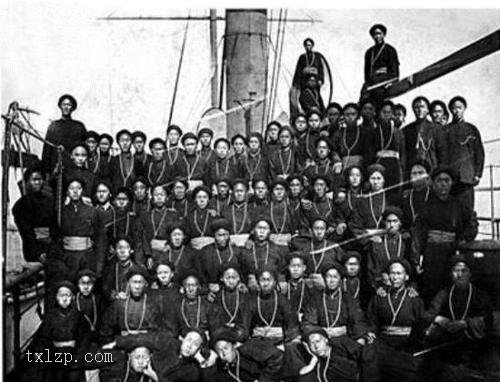Period:Unknown Production date:6thC-7thC (circa)
Materials:stucco, 灰泥 (Chinese),
Technique:mould-made, 模製 (Chinese),
Dimensions:Height: 6.80 centimetres Width: 7.50 centimetres
Description:
Three spiral curls made of stucco. They represent the hair of the Buddha which, according to legend, grew back curly after he shaved his head as a sign of his renunciation of earthly life. The curls were made using a mould similar to MAS.410.
IMG
![图片[1]-figure; 畫像(Chinese) BM-MAS.421-China Archive](https://chinaarchive.net/Unknown/43/mid_01132442_001.jpg)
![图片[2]-figure; 畫像(Chinese) BM-MAS.421-China Archive](https://chinaarchive.net/Unknown/43/mid_01132445_001.jpg)
![图片[3]-figure; 畫像(Chinese) BM-MAS.421-China Archive](https://chinaarchive.net/Unknown/43/mid_00012053_001.jpg)
Comments:Zwalf 1985The use of moulds to produce parts of larger figures was widespread in Central Asia. At Dunhuang and elsewhere small elements such as groups of curls or locks of hair, to be applied to the head of a large figure, or for decorative borders, are common. On the northern route at Mingoi some of the shrines contained hundreds of moulded figures forming narrative tableaux. Basic types could be given individual character after moulding by modelling or applying further moulded details. At Dunhuang and elsewhere in China, the practice was paralleled in wall-painting by the use of stencils to produce images in regular series, to be distinguished by painting in different colours.
Materials:stucco, 灰泥 (Chinese),
Technique:mould-made, 模製 (Chinese),
Dimensions:Height: 6.80 centimetres Width: 7.50 centimetres
Description:
Three spiral curls made of stucco. They represent the hair of the Buddha which, according to legend, grew back curly after he shaved his head as a sign of his renunciation of earthly life. The curls were made using a mould similar to MAS.410.
IMG
![图片[1]-figure; 畫像(Chinese) BM-MAS.421-China Archive](https://chinaarchive.net/Unknown/43/mid_01132442_001.jpg)
![图片[2]-figure; 畫像(Chinese) BM-MAS.421-China Archive](https://chinaarchive.net/Unknown/43/mid_01132445_001.jpg)
![图片[3]-figure; 畫像(Chinese) BM-MAS.421-China Archive](https://chinaarchive.net/Unknown/43/mid_00012053_001.jpg)
Comments:Zwalf 1985The use of moulds to produce parts of larger figures was widespread in Central Asia. At Dunhuang and elsewhere small elements such as groups of curls or locks of hair, to be applied to the head of a large figure, or for decorative borders, are common. On the northern route at Mingoi some of the shrines contained hundreds of moulded figures forming narrative tableaux. Basic types could be given individual character after moulding by modelling or applying further moulded details. At Dunhuang and elsewhere in China, the practice was paralleled in wall-painting by the use of stencils to produce images in regular series, to be distinguished by painting in different colours.
© Copyright
The copyright of the article belongs to the author, please keep the original link for reprinting.
THE END

![[Qing Dynasty] British female painter—Elizabeth Keith, using woodblock prints to record China from the late Qing Dynasty to the early Republic of China—1915-China Archive](https://chinaarchive.net/wp-content/uploads/2022/11/image-191x300.png)



